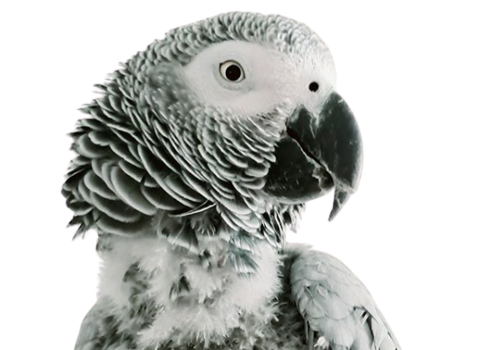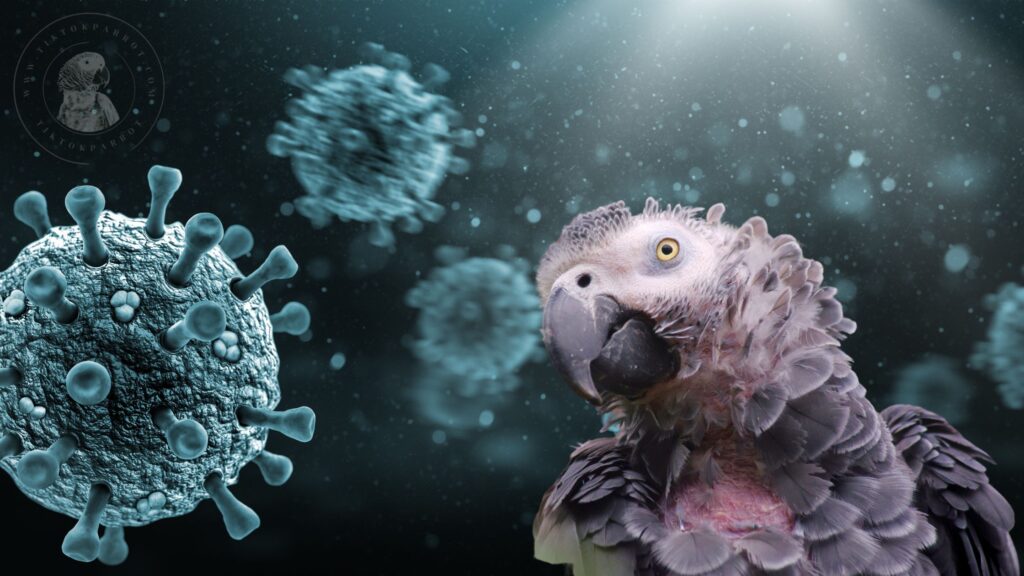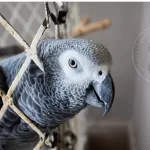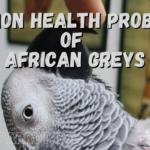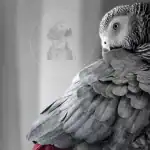Decoding Pacheco’s Disease: Protecting Your Parrots from a Silent Threat
Alright, folks, gather ’round and listen up – we’re about to dive headfirst into the wild world of Pacheco’s Disease. Now, I know what you’re thinking – “What in the world is Pacheco’s Disease, and why should I care?” Well, buckle up, because we’re about to unravel the mysteries of this avian ailment and arm you with all the knowledge you need to keep your feathered friends happy and healthy.
Have you ever wondered why some birds suddenly fall ill and die, making bird experts confused? Well, Pacheco’s Disease (PDV), a silent but deadly threat lurking among our feathered friends. This insidious illness, caused by herpesviruses, strikes swiftly, spreading through aviaries like wildfire.
But fear not, as knowledge is power. In this article, we delve into the depths of PDV, uncovering its origins, symptoms, transmission methods, and most importantly, how to shield our beloved birds from its grasp. Let’s soar into the world of Pacheco’s Disease and emerge armed with the tools to protect our avian companions.
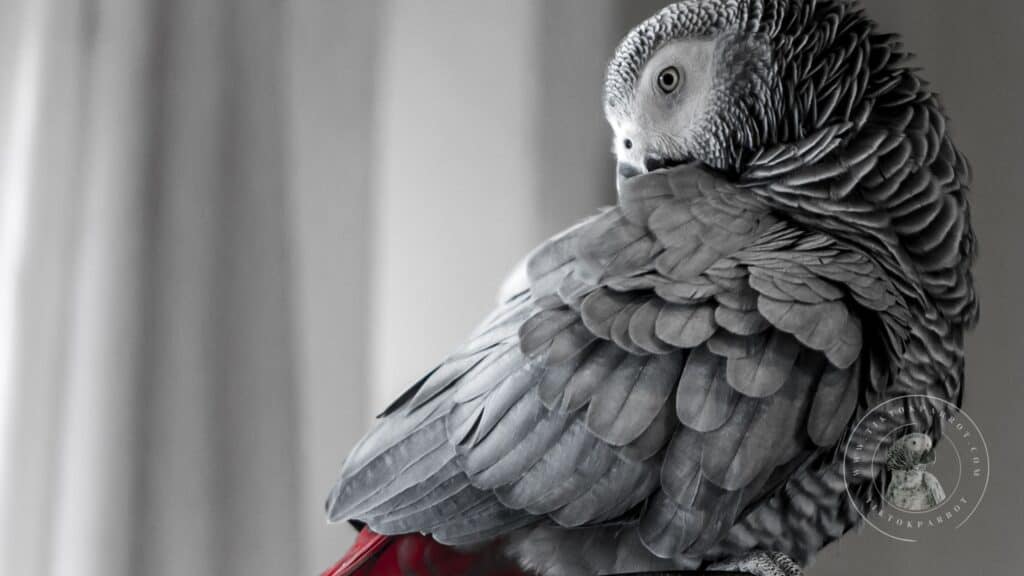
Description:
First things first, let’s break it down Barney-style – what exactly is Pacheco’s Disease? Think of it like the boogeyman of the bird world – a sneaky little virus that can wreak havoc on your feathered companions if you’re not careful.
Named after the esteemed Dr. Carlos Pacheco, who first identified the disease in the 1970s, Pacheco’s Disease is caused by a pesky little virus known as the Psittacine Herpesvirus-1 (PHV-1). Sounds fancy, right? Well, don’t let the name fool you – this virus means business.
Pacheco’s disease is caused by certain herpesviruses. These viruses are tiny, with a double-stranded DNA structure, infecting lymphatic, skin, and nerve tissues.
Transmission:
But wait, it gets even crazier – how is Pacheco’s Disease transmitted? Brace yourselves, folks, because this virus is one sneaky little sucker. From feather dust to shared water bowls, Pacheco’s Disease can spread faster than gossip at a bird bath. It’s like a game of avian roulette – one wrong move, and your entire flock could be at risk.
PDV mainly spreads through infected droppings and nasal discharge. It remains stable outside the body, contaminating air, surfaces, food, and water. Birds can carry the virus without showing symptoms, and stress can reactivate it, leading to viral shedding.
Symptoms:
Now, onto the nitty-gritty – what are the symptoms of Pacheco’s Disease? Picture your parrot suddenly feeling under the weather – lethargic, fluffed up feathers, loss of appetite – you get the drift. But here’s the kicker – these symptoms can vary from bird to bird, making it tricky to diagnose. It’s like trying to play detective with a flock of feathered suspects – you never know who’s the culprit until it’s too late.
Signs of PDV include tiredness, diarrhea, messy feathers, sinus issues, loss of appetite, eye inflammation, and tremors. Feces may turn green from liver damage. Some birds die suddenly without symptoms.
Prevention:
Now, I know what you’re thinking – “How in the world do I protect my precious parrots from this dastardly disease?” Fear not, dear readers, for I come bearing good news. Prevention is the name of the game when it comes to Pacheco’s Disease. From regular check-ups to strict quarantine protocols, there are plenty of steps you can take to keep your feathered friends safe and sound.
I would say quickly Isolate infected birds and disinfect surfaces with bleach. Vaccination is available but may have side effects and doesn’t cover all PDV strains. Quarantine new birds and test for infection.
Diagnosis:
Now, let’s talk diagnosis, if your parrot starts acting a bit off, like they’ve got a case of the birdie blues. What do you do? Well, it’s time to play detective and get your feathered friend to the avian vet pronto. Through a series of tests and examinations, your vet can work their magic and determine whether Pacheco’s Disease is the culprit behind your parrot’s woes.
It’s like solving a puzzle – piece by piece, symptom by symptom, until the mystery is unraveled and the diagnosis is clear as day. Tests include PCR and sequence testing, along with examining tissues.
Treatment:
But what about treatment, you ask? Ah, my dear readers, here’s where things get interesting. While there’s no magic cure for Pacheco’s Disease, there are plenty of steps you can take to give your feathered friend a fighting chance.
Acyclovir can help but may harm the kidneys, so check with your vet ASAP. Early treatment is best, from antiviral medications to supportive care like fluids and rest, your vet will work tirelessly to nurse your parrot back to health. It’s like having your very own avian superhero swoop in to save the day – cape and all.
But here’s the kicker – early detection is key when it comes to treating Pacheco’s Disease. The sooner you catch it, the better your chances of a successful recovery. So, don’t hesitate to seek help if you notice any changes in your parrot’s behavior or health.
Remember, folks – when it comes to our feathered friends, every second counts.
My Closing Thoughts:
So, there you have it, folks – the ins and outs of Pacheco’s Disease, laid out before you like a buffet of bird knowledge. Armed with this newfound wisdom, you can rest easy knowing that you’re doing everything in your power to keep your feathered companions happy, healthy, and disease-free.
Remember, folks – knowledge is power, especially when it comes to protecting our precious pets.
If you found this blog helpful, It would be great if you could share it with your family and friends who might find it useful as well.
You might like to read these as well 🙂
What diseases can African Grey parrots get?
Mystery of African Grey Parrot Proventricular Dilatation Disease (PDD)
From Beaks to Bellies: Understanding African Grey Parrot Vomiting
Considering an African Grey Parrot as Your Pet: A Smart Choice?
What causes death in African Grey Parrots?
What to Do When Your Pet Dies
For more useful content about African grey parrots, you can subscribe my site with your email to get notification upon publishing a new blog, the subscribe box you can see on the right side of this page. Also if you get an alert on your web browser while browsing my site, allow it and that will also give you an alert whenever I publish a new blog. 🙂
Stay safe and much love!


Hey there! 🐾 Looking for top-notch pet supplies or anything on Amazon?
Support our site by shopping on Amazon through our this referral link, it will not cost you extra!
Your purchases on Amazon can help us continue providing valuable content.
Thank you for your support! 🛍️
